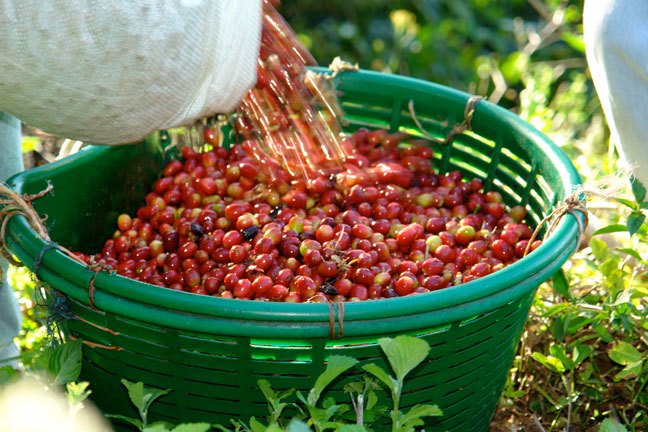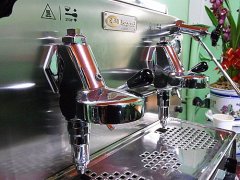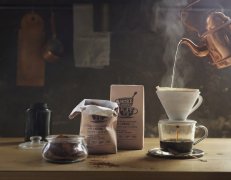The reason why Arabica coffee beans taste better than robusta coffee

Professional coffee knowledge exchange more coffee bean information please follow the coffee workshop (Wechat official account cafe_style)
Manning's Robusta pedigree, Arabica beans or Katim or Katim?
In addition to caffeine, the charming aroma of coffee is the main reason why many coffee fans miss coffee from time to time. But why on earth does the coffee smell so good? The most important thing, of course, is that coffee beans themselves store a variety of raw materials, such as carbohydrates, proteins, lipids, organic acids and so on. After heating and baking, it will start a series of complex reactions, creating an attractive aroma.
The two most important reactions are caramelization (caramelization, oxidation and browning of sugars) and Mena (Maillard reaction, reaction of amino acids with sugars). Both reactions require the participation of sugars, and the rich sucrose in raw beans provides the materials needed for these two reactions. Previous studies also found that there was a positive correlation between sucrose content and coffee bean flavor. From the table below, it can be seen that the content of sucrose (Sucrose) in Arabica is twice as much as that in Robusta, which also explains why the flavor of Arabica coffee beans is better than that of Robsta.
Caramelization reaction
After drinking coffee, the dry coffee stains at the bottom of the cup were arranged into interesting patterns, and suddenly the sweet smell of caramel flashed for a moment, and then smell it carefully, the sweet smell of caramel came from the bottom of the cup, why is there the sweetness of caramel? Later, I found that the black coffee itself is really sweet, especially the sweetness of caramel! But the sweetness of each kind of coffee varies depending on the variety of beans and the way it is roasted.
The sugar in coffee beans is caramelized at about 170 ℃, which is exactly the melting point of sucrose (185 ℃) and the temperature of the explosion stage when coffee beans are roasted. The product of caramelization is divided into two parts:
The dehydration product of sugar is caramel or sauce.
The pyrolysis products are mainly volatile aldehydes and ketones.
Generally speaking, fire-roasted aroma, caramel and color are produced in the caramelization reaction, as well as other aromatic substances such as maltol, Cyclotene, furan and so on. These compounds can also be found in red wine, fruit juices, cream and other foods.
However, if caramel is too much in the baking process is not a good thing, but will cause carbonization, making the coffee dry and choking. If the caramel is not enough, it will make the aroma monotonous and lack of layers.
Mena reaction
Recently, more and more coffee shops set up a baking machine in front of the store to bake by themselves, so that they can not only save costs but also control their own quality. So walking on the street, you can often smell the unique aroma of roasted coffee beans, including the burning blue smoke smell of plant fibers, the sweet smell of cream, the brown smell of toast, and so on. Most of these rich flavors come from the Mena reaction during baking.
The Mena reaction can be divided into three stages.
Initial: carbonylamine condensation Amadori molecular rearrangement
Metaphase: fructosamine, a product of Amadori molecular rearrangement, is dehydrated to HMF.
The last stage: Aldol condensation, polymerization of melanin
In addition to sugars, proteins also account for about 11% of the weight of raw beans, and the amino acids contained in these proteins are exactly the raw materials needed in the Mena reaction. Mena reaction refers to the amino acids and reducing sugars (glucose, fructose, lactose, etc.) in food. ) A series of reactions in the heating process. Mena reaction produces a variety of aromatic substances and pigments such as Pyridines, Pyrazines, Oxazoles, Thiazoles, Pyrroles. The Mena reaction plays an important role in the flavor of food cooking, whether it is the blackening and fragrance of the sausage when baking sausages, the soft roast chicken on the outside and the delicious baked bread. Mena reaction is responsible for the complete color, smell and flavor of these barbecue foods.
Coffee is blessed with a wide variety of complex chemicals, in addition to the above-mentioned compounds, there are other organic acids, inorganic acids, plant bases and so on. Not only sweet and beautiful ingredients, some slightly bitter compounds make coffee flavor have a wider level and change, together to create a unique rich taste of coffee.
The Revolution of Robusta Robusta Coffee why Robusta Coffee beans are notorious
Important Notice :
前街咖啡 FrontStreet Coffee has moved to new addredd:
FrontStreet Coffee Address: 315,Donghua East Road,GuangZhou
Tel:020 38364473
- Prev

How do you make espresso what's the difference between North Italy and South Italy? How to adjust the Italian coffee machine
Professional coffee knowledge exchange more coffee bean information please follow the coffee workshop (Wechat official account cafe_style) Espresso coffee extraction detailed steps of Italian concentration for Italian coffee we all know that there is a difference between North and South meaning and North meaning uses shallow roasted coffee most of the North Italian beans choose Arabica beans to emphasize the overall acidity and hierarchical flavor south.
- Next

The counterattack of Robusta Coffee beans Robsta will replace Arabica and enter the boutique coffee world.
Professional coffee knowledge exchange more coffee bean information please follow the coffee workshop (Wechat official account cafe_style) Manning's Robsta blood, Arabica beans or Katim or Katim? As a very important variety in the coffee world, Robusta plays an important role in the business world. Although Q-Grader is already familiar in the coffee circle, however
Related
- Beginners will see the "Coffee pull flower" guide!
- What is the difference between ice blog purified milk and ordinary milk coffee?
- Why is the Philippines the largest producer of crops in Liberia?
- For coffee extraction, should the fine powder be retained?
- How does extracted espresso fill pressed powder? How much strength does it take to press the powder?
- How to make jasmine cold extract coffee? Is the jasmine + latte good?
- Will this little toy really make the coffee taste better? How does Lily Drip affect coffee extraction?
- Will the action of slapping the filter cup also affect coffee extraction?
- What's the difference between powder-to-water ratio and powder-to-liquid ratio?
- What is the Ethiopian local species? What does it have to do with Heirloom native species?

